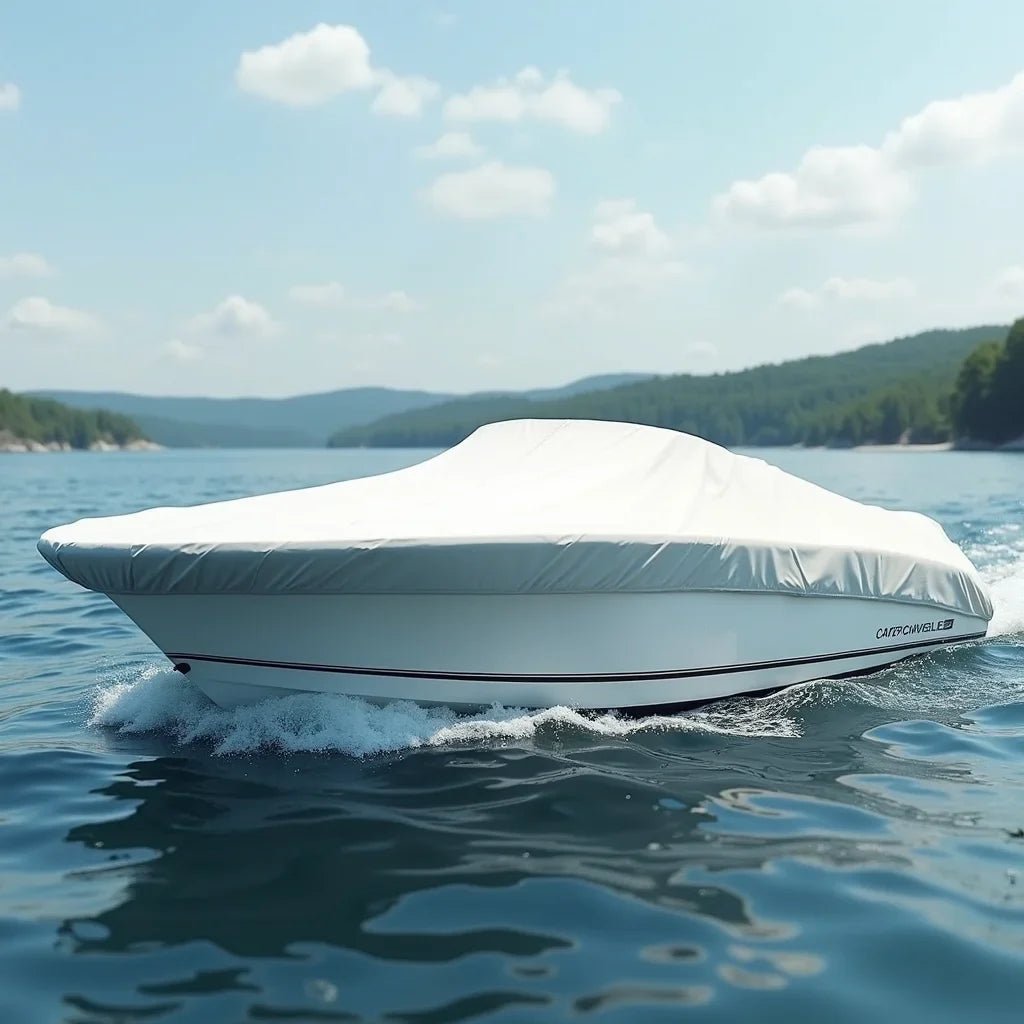Updated on: 2025-10-11
- Why a boat cover matters and what you will learn
- Common Mistakes to Avoid
- Pros & Cons Analysis
- Quick Tips
- Wrap-Up & Key Insights
- Questions and Answers
A dependable boat cover is one of the simplest ways to protect your boat from sun, rain, dust, and debris. Whether you lean toward a fabric vessel cover, a rugged boat tarp, or seasonal boat shrink wrap, choosing well can reduce cleaning time, prevent mildew, and protect upholstery and finishes. In this friendly guide, you will learn how to avoid common sizing and care mistakes, compare options by durability and cost, and use accessories like a boat cover support pole for better results. You will also find straightforward tips to clean and waterproof a boat cover for longer life and guidance on sizing, including what to do if you have a 20-foot boat.
Common Mistakes to Avoid
Picking the wrong size boat cover
Choosing a cover that is too small leads to stress on seams, while a cover that is too large can flap, chafe, and collect water. Check the manufacturer’s length and beam charts, and account for add-ons like bow rails, trolling motors, and swim platforms.
Skipping a boat cover support pole
Without a support pole or ridge line, water can pool on the cover and stretch fabric or tear seams. A simple adjustable support pole helps shed water and snow, improves airflow, and reduces mildew risk.
Forgetting trailerable reinforcement
Trailering without adequate straps and reinforcements can cause premature wear. If you trailer often, choose a trailerable design with strong hems, multiple tie-down points, and a snug fit.
Ignoring ventilation
Moisture trapped under a cover invites mildew. Look for built-in vents or use vented support poles. Always store the boat as dry as possible before covering.
Using harsh cleaners
Strong bleach or abrasive tools can damage coatings and reduce water repellence. Use mild soap or a cleaner approved for marine fabrics, rinse thoroughly, and reproof with a compatible water repellent when needed.
Covering a wet boat
Sealing in moisture can cause odors and staining. If possible, allow the boat and cover to dry before storage. A brief wipe-down can make a noticeable difference.
Choosing the wrong material for your climate
Light polyester may be fine for mild, dry climates, while heavy canvas or coated fabric may serve better in wet or snowy areas. Consider UV exposure, rainfall, and storage conditions when selecting materials.
Mismanaging boat shrink wrap disposal
Boat shrink wrap protects well over winter but is single-season. If you use it, plan for proper recycling or disposal, and inspect framing to prevent chafe points on rails or hardware.
Pros & Cons Analysis
Fabric covers vs. boat shrink wrap
- Fabric cover pros: Reusable, breathable options, easier to remove and reinstall, cost-effective over time, compatible with support poles and vents.
- Fabric cover cons: Requires cleaning and periodic waterproofing, fit matters to prevent flapping, may need strap replacements over time.
- Shrink wrap pros: Excellent for long-term or winter storage, custom-contoured weather barrier, very secure in wind when installed correctly.
- Shrink wrap cons: Single-season expense, not breathable without vents, disposal or recycling needed, not convenient for frequent access.
Universal vs. custom-fit vessel cover
- Universal pros: More affordable, readily available, flexible sizing across models.
- Universal cons: May not hug contours, more likely to pool water without careful strap setup, can flap at speed during trailering.
- Custom-fit pros: Precise coverage, less flapping, better protection of rub rails and hardware, often includes reinforcements where needed.
- Custom-fit cons: Higher upfront cost, longer lead times, model-specific limits if you change boats.
Material choices and coatings
- Polyester blends: Good UV resistance, lighter weight, often cost-effective.
- Solution-dyed fabrics: Color and UV protection reach through the fiber, helping with fade resistance.
- Canvas/cotton blends: Breathable and sturdy, but heavier and slower to dry.
- Coatings (PU, acrylic): Improve water repellence; periodic reproofing helps maintain performance.
Examples for specific boats
If you run an 18-foot bass boat, a waterproof trailerable boat cover for 18 ft bass boat can balance durability and ease of travel. For leisure pontoons, a custom-fit pontoon boat cover with elastic hem and straps can secure around varying rail shapes and reduce wind lift on open water or highways.
Quick Tips
- Measure overall length including platforms or motors, and beam at the widest point, to choose the right size boat cover.
- Use a boat cover support pole or a simple ridge line to prevent pooling and increase airflow.
- Clean with mild soap and soft brushes, rinse thoroughly, and allow full drying before storage.
- Reproof with a compatible water repellent when water stops beading on the fabric.
- Add vent caps or vented poles if moisture buildup is a concern.
- Use non-abrasive pads at chafe points like cleats and windshield corners.
- For frequent trailering, choose reinforced hems and multiple tie-down straps, then check strap tension after the first few miles.
- Label bow and stern on the storage bag to speed up installation next time.
- Store the cover clean, dry, and loosely folded in a breathable bag to reduce mildew and creasing.
How to measure your boat for a better-fitting boat cover
Measuring carefully helps you select a cover that fits well and lasts longer.
- Step 1 — Length: Measure from the tip of the bow to the end of the stern, including any platforms or outboards that add to overall length.
- Step 2 — Beam: Measure the widest point of the boat, typically across the windshield or gunnels.
- Step 3 — Allowances: Add a small allowance for rails, trolling motors, or T-top hardware, if applicable.
- Step 4 — Compare: Match your measurements to the manufacturer’s size chart, choosing the smallest cover that accommodates your full dimensions without strain.
How to clean and waterproof a boat cover
- Step 1 — Shake and brush: Remove loose debris with a soft brush.
- Step 2 — Mild wash: Mix mild soap with water, sponge gently, and rinse until water runs clear.
- Step 3 — Dry fully: Air-dry the cover completely before storage or reproofing.
- Step 4 — Reproof: Apply a fabric-safe water repellent per label directions; allow full cure before use.
For extra help sizing or caring for your cover, you may find helpful local tips and seasonal reminders on the blog, or you can reach out via the contact page with questions about fit and storage. To get to know the team behind the advice, visit the about page, or browse trip insights on the homepage for on-the-water guidance that pairs nicely with proper cover care.
Wrap-Up & Key Insights
Protecting your boat starts with a thoughtful boat cover choice and consistent care. A well-sized vessel cover that includes vents and a boat cover support pole prevents pooling and helps the fabric last longer. If you trailer often, prioritize reinforced hems and reliable straps. If you plan long idle periods, boat shrink wrap can be suitable, but a reusable fabric cover offers convenience and long-term value for many owners.
When comparing options, balance cost, climate, and usage. A universal boat tarp can be a budget-friendly starting point, while a custom-fit design provides protection tailored to your hull. Keep the cover clean, dry, and treated with a fabric-appropriate water repellent. Pay attention to small details—like chafe guards and strap tension—to avoid common pitfalls. With these gentle practices, your boat cover can contribute to a cleaner deck, protected upholstery, and a ready-to-enjoy vessel each time you head out.
Questions and Answers
What size boat cover do I need for my 20-foot boat?
Measure overall length from the tip of the bow to the farthest aft point, including platforms or outboards that add to total length. Then measure beam at the widest point. Choose a cover that accommodates both measurements with a bit of allowance for accessories. If you sit between sizes, select the size that meets the full length without overstretching. For many 20-foot models, a “fits 19–21 ft” category works well, but always confirm beam limits and any notes for rails or trolling motors.
How do I clean and waterproof a boat cover to make it last longer?
Brush off loose debris, then wash with mild soap and plenty of water using a soft brush or sponge. Rinse thoroughly and allow the fabric to dry fully. When water stops beading, apply a fabric-appropriate water repellent, following label directions. Avoid harsh chemicals or high-pressure sprayers, which can damage the fibers and coatings. Regular, gentle cleaning and periodic reproofing help maintain both appearance and performance.
Is a boat cover support pole necessary?
While not mandatory, a support pole reduces water pooling, limits fabric stretching, and improves airflow. This small addition can extend the life of your boat cover, reduce mildew, and prevent seam stress. Many adjustable poles include vent options for extra moisture control.
When should I choose boat shrink wrap over a fabric cover?
Boat shrink wrap is helpful for long, unattended storage in harsh weather, especially when you want a tight, protective barrier. If you need frequent access or value reusability, a quality fabric cover with proper ventilation and support typically offers better convenience and long-term economy. Consider your storage duration, climate, and access needs before deciding.

Owner and CEO of Clinch River FIshing USA. A marine electroncs, fishing and outdoor store.

